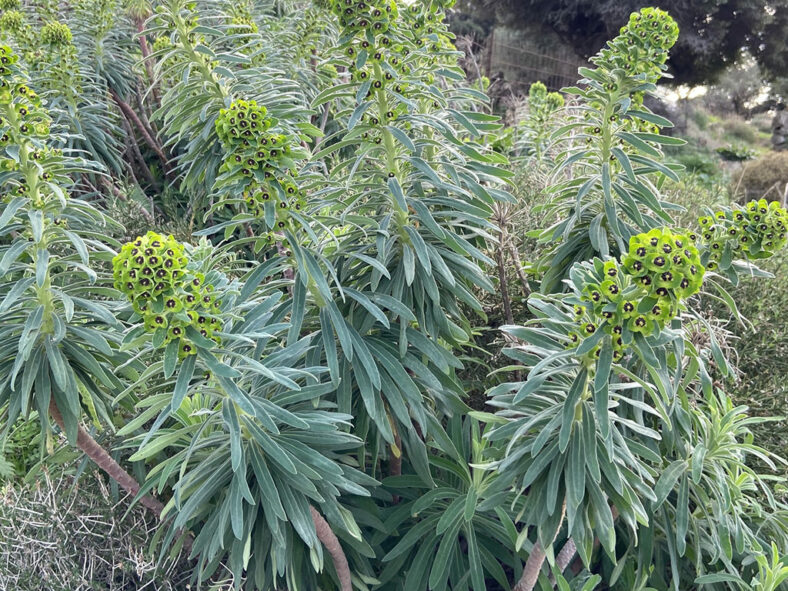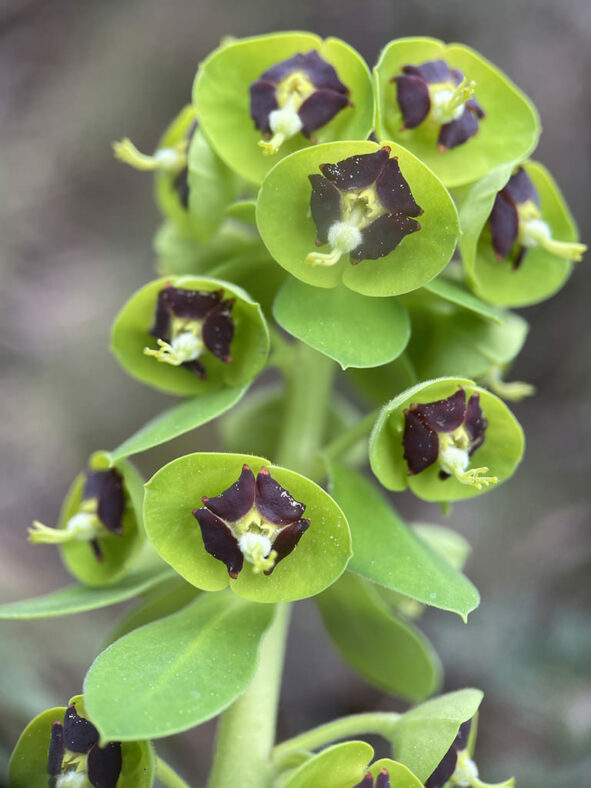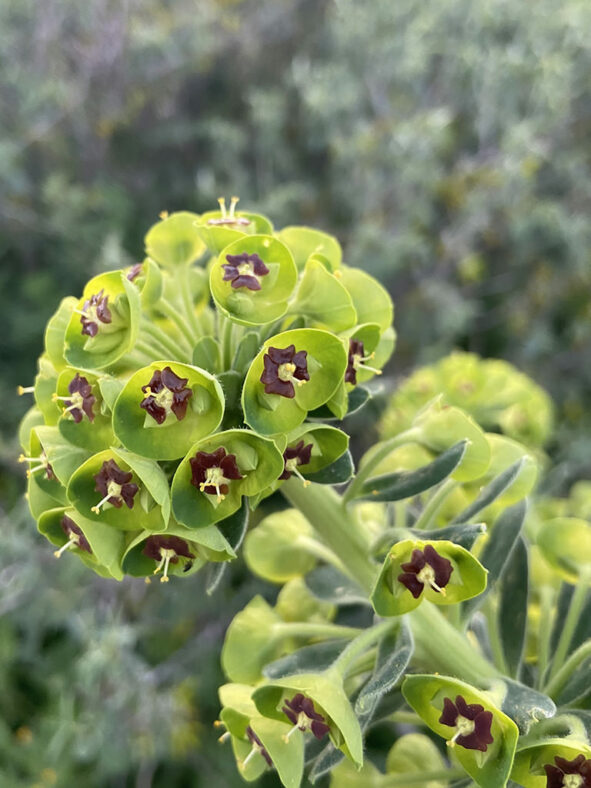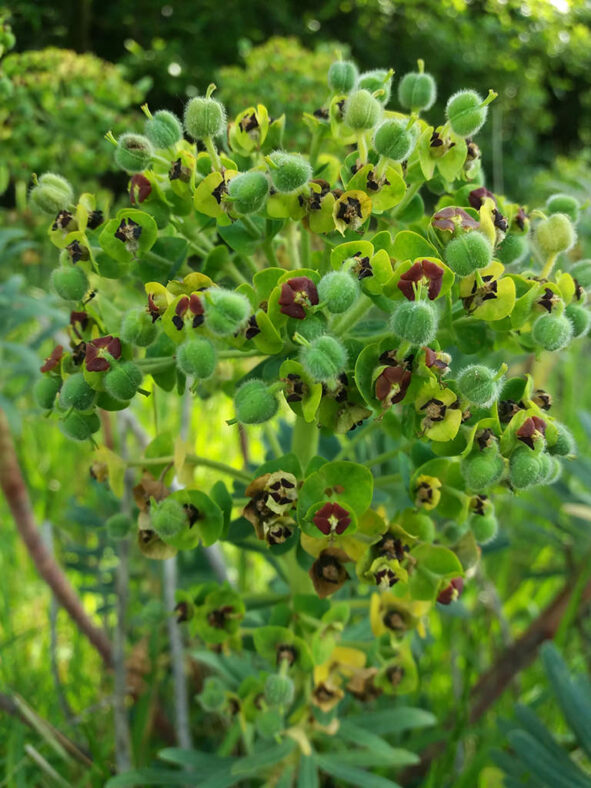Euphorbia characias is valued as an ornamental plant because of its exceptional ability to thrive in drought conditions and its effective ground-covering capabilities. Although it may have a relatively short lifespan of 5 to 7 years, it reliably self-seeds, ensuring its continued presence in the garden.
Scientific Name
Euphorbia characias L.
Common Name(s)
Albanian Spurge, Mediterranean Spurge
Synonym(s)
Esula characias, Euphorbia characias subsp. characias, Tithymalus characias
Scientific Classification
Family: Euphorbiaceae
Subfamily: Euphorbioideae
Tribe: Euphorbieae
Subtribe: Euphorbiinae
Genus: Euphorbia
Etymology
The specific epithet "characias" (pronounced "kar-RAY-see-as") is a Latinized form of "xaraxias," the ancient name given to this species by Pedanius Dioscorides (40-90 AD) in the first century AD.
Origin
Euphorbia characias is native to the Mediterranean Region. It grows along the entire northern side of the Mediterranean Sea, from Portugal to Turkey.
Description
Euphorbia characias is a perennial shrub with narrow, blue-green leaves arranged spirally along unbranched, green stems. The stems are upright or arching, almost woody at the base, and can reach a height of up to 5 feet (1.5 m). The lance-shaped leaves are densely covered in short hairs and can measure up to 6 inches (15 cm) in length.
During the spring, each stem is topped by a large, dense, spherical to oblong cluster of dark purple to black floral nectar glands within the yellow, cup-like cyathia. The fruits are smooth, densely hairy capsules. Each capsule splits open at maturity to release three seeds.

How to Grow and Care for Euphorbia characias
Light: Providing your Euphorbia characias with ample sunlight is essential for optimal growth. Place it near a sunny window or move it to your balcony or garden during the warmer months, gradually increasing sun exposure to avoid sunburn.
Soil: Use a well-draining soil, either a commercial potting mix formulated for succulents or create your own well-draining soil.
Temperature: While high summer temperatures are not a problem, low winter temperatures can damage or kill your plant. Euphorbia characias grows best in USDA Plant Hardiness Zones 7a to 10b, with average minimum winter temperatures ranging from 0°F to 40°F (-17.8°C to 4.4°C).
Watering: From spring to fall, water the plant when the top inch (2.5 cm) of the soil feels dry. Reduce watering in winter and give it just enough water to prevent wilting. During the warm season, the evening is the best time of day for watering.
Fertilizing: To ensure the potted plant receives sufficient nutrients, apply a balanced fertilizer in a 10-10-10 NPK formulation, diluted to 1/4 strength weekly during the growing season.
Repotting: Although your Euphorbia characias does not need to be repotted often, it will benefit from repotting when it outgrows its pot. The repotting is best done in early spring at the beginning of the growing season. Wear gloves, protective clothing, and appropriate eye protection when handling this plant.
Propagation: The easiest and quickest way to propagate this plant is by stem cuttings. Although it can be started from seeds, germination can be difficult for them. Take cuttings during the growing season, with spring being the best time for sowing seeds.
Learn more at How to Grow and Care for Euphorbia.
Toxicity of Euphorbia characias
Euphorbia characias produces a poisonous white milky sap that may cause burns or irritation if in contact with the skin or eyes. Therefore, it is best to keep this plant away from children and pets.
Cultivars and Hybrids of Euphorbia characias
Links
- Back to genus Euphorbia
- Succupedia: Browse succulents by Scientific Name, Common Name, Genus, Family, USDA Hardiness Zone, Origin, or cacti by Genus
Photo Gallery
Click on a photo to see a larger version.


